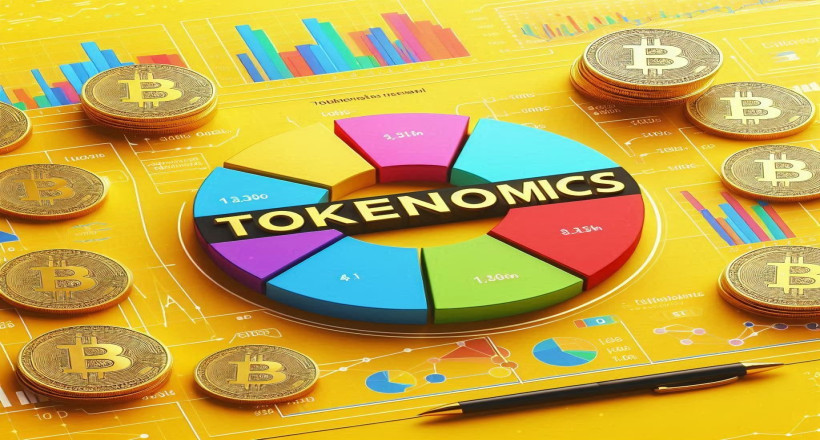
Tokenomics is one of the key concepts in the world of cryptocurrencies, combining the words token and economics. It refers to the study of how tokens are designed, distributed, and managed, as well as the economic impact they have within the ecosystem of a blockchain project. Analyzing and understanding tokenomics is crucial for investors, developers, and even regular users involved in the cryptocurrency market, as it helps them assess the real value and growth potential of tokens. In this article, we will thoroughly examine the various aspects of tokenomics and demonstrate how these principles can help in better understanding the value of cryptocurrencies and evaluating the potential of blockchain projects.
What is a Token?
In the blockchain world, a token refers to a type of digital asset that can be used within a decentralized network. Tokens may represent shares, access to services, or even governance rights in blockchain projects. At the same time, the distinction between tokens and traditional cryptocurrencies such as Bitcoin and Ethereum is important; cryptocurrencies are primarily used as a medium of exchange, while tokens are often used as units for interactions within the ecosystem of a specific project.
Key Principles of Tokenomics
Tokenomics refers to the design, management, and performance of a token within a blockchain ecosystem. Some of the most important principles of tokenomics that must be considered include:
Supply and Demand
Supply and demand are fundamental factors influencing the value of tokens. Projects with a limited token supply and high demand typically have higher value. For example, Bitcoin, with its limited supply of 21 million units and high demand, has a higher price.
Token Distribution Model
How tokens are distributed is of particular importance. Initial Coin Offerings (ICOs), Initial Exchange Offerings (IEOs), and staking are common methods of distributing tokens. Fair distribution of tokens can prevent excessive concentration of tokens in the hands of individuals or entities and promote equitable distribution of power and wealth across the network.
Inflationary and Deflationary Mechanisms
Many blockchain projects use deflationary mechanisms to increase the value of tokens. For instance, some projects burn a portion of their tokens (destroy them) to reduce supply, thereby boosting the value of the remaining tokens. On the other hand, some projects employ inflationary models to stimulate growth, where tokens are gradually issued over time.
The Role of Tokenomics in Project Valuation
Evaluating the tokenomics of a project is crucial for understanding its value. Here are some key factors that play a role in assessing the real value of cryptocurrencies:
Maximum Supply and Circulating Tokens
One of the most important factors to consider is the maximum supply and the circulating supply of tokens. Tokens with a limited supply have greater potential for price increases, especially if demand rises.
Token Utility and Use Cases
A major factor that can contribute to the value of a token is its real-world utility and use cases. Tokens that have broader applications and are used in various ecosystems generally have higher value. For instance, tokens used as a medium of exchange in decentralized payment networks or as governance tokens hold greater significance.
Locked Tokens and Staking Mechanisms
Projects that use staking mechanisms and lock a portion of their tokens for an extended period usually have fewer tokens available in the open market, which can help increase the value of those tokens.
Token Governance Systems
Projects that use governance tokens allow their users to participate in important decision-making processes. This can have a positive impact on the token’s value, as the community can directly influence the growth and development of the project.
The Impact of Tokenomics on Investment
Tokenomics serves as a key metric for investors in the cryptocurrency space. Investors should pay special attention to inflationary or deflationary mechanisms, the distribution model, and the practical applications of tokens in order to make more informed and smarter investment decisions.
Conclusion
Tokenomics is one of the most important tools for assessing the real value of cryptocurrencies and blockchain projects. Through the analysis of distribution models, supply and demand, inflationary and deflationary mechanisms, and the use cases of tokens, investors can gain a better understanding of the value and growth potential of projects. Ultimately, paying attention to tokenomics when investing in cryptocurrencies can help you make more informed decisions and capitalize on the opportunities available in this market.